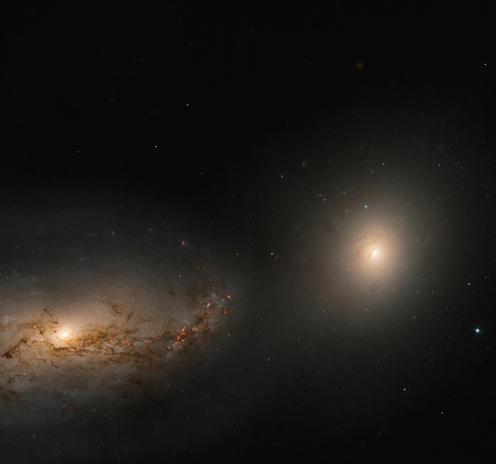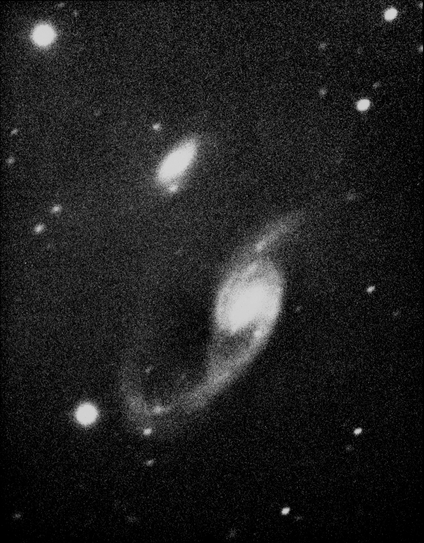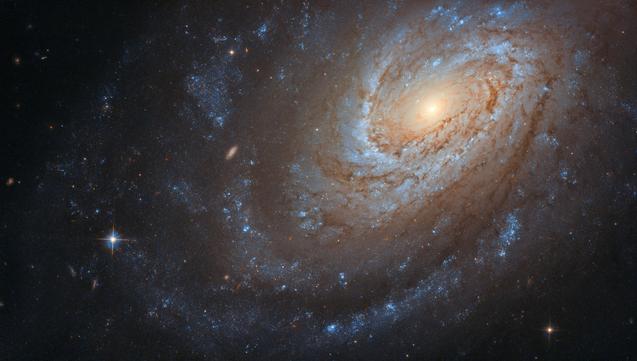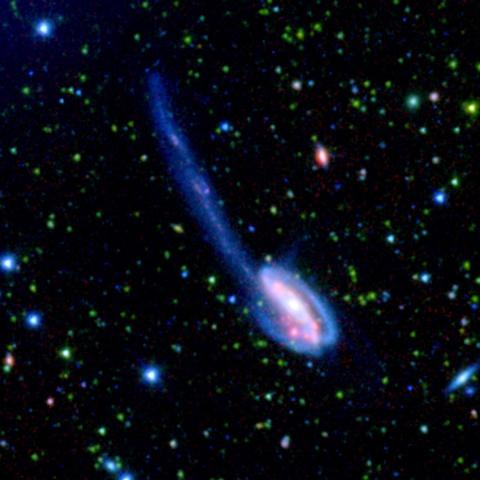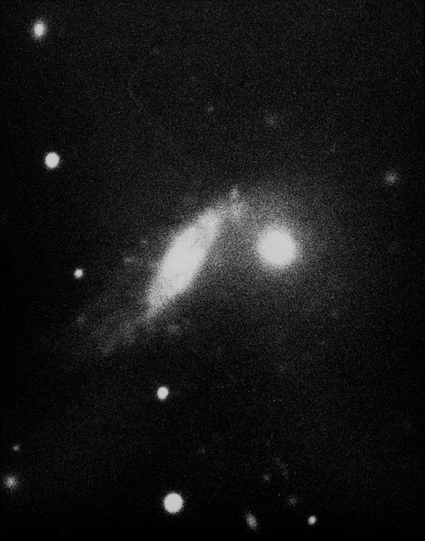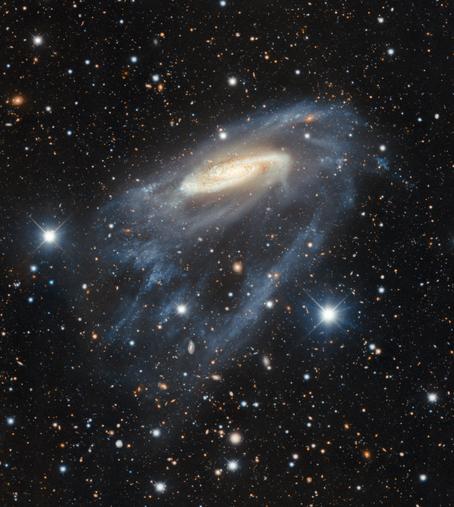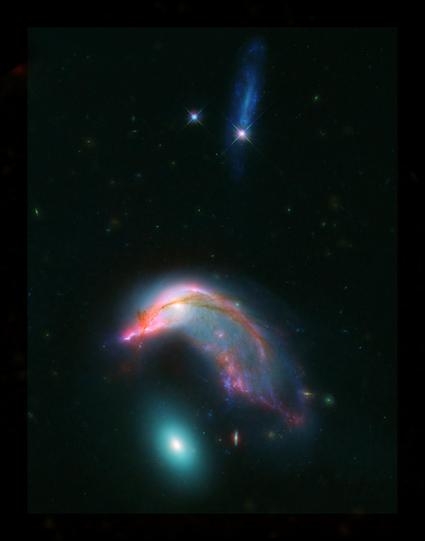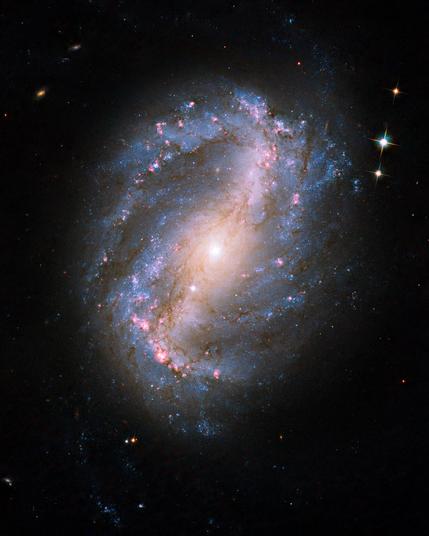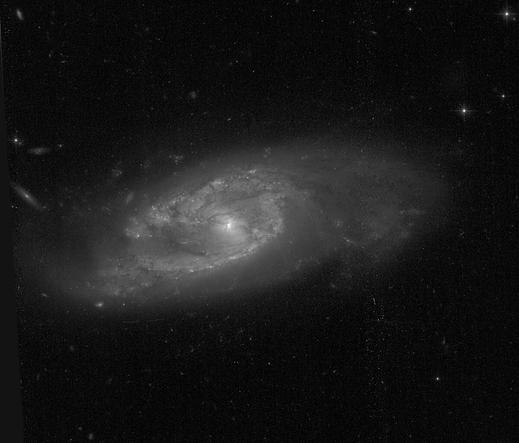Hubble image of Arp 94, also known as NGC 3226 and NGC 3227.
The large spiral galaxy, NGC 3227 is interacting with its elliptical galaxy companion, NGC 3226. Faint tidal streams of gas and dust link the pair, showing evidence of their mutual gravitational pull.
Credit: NASA, ESA, and H. Ford, G. Kober
Source: https://science.nasa.gov/missions/hubble/hubble-captures-a-galactic-dance/
